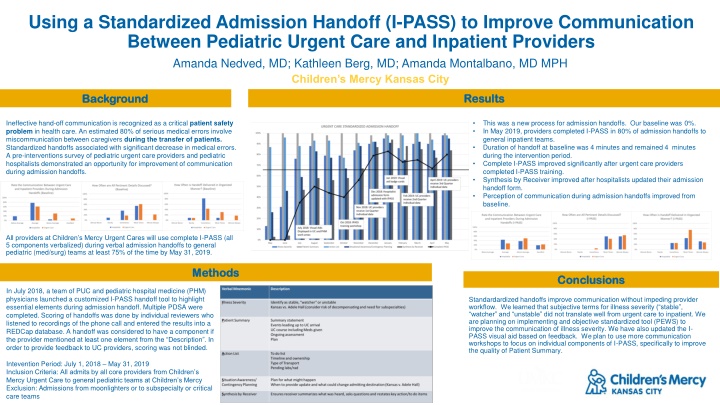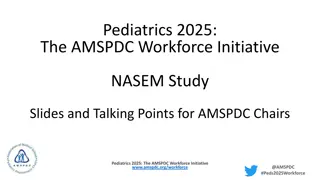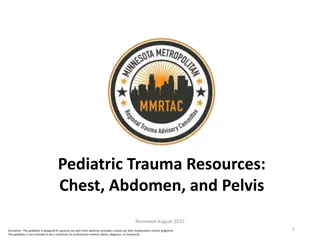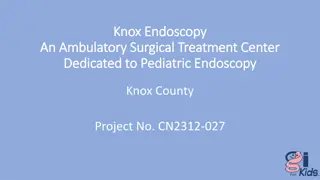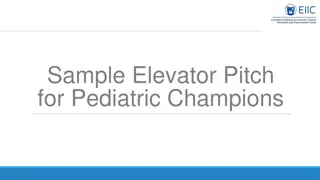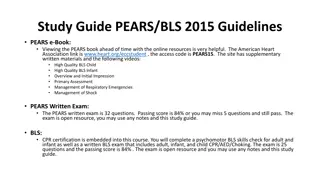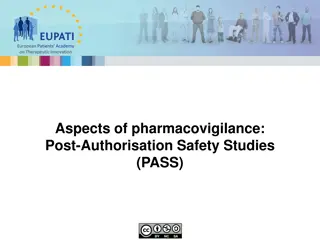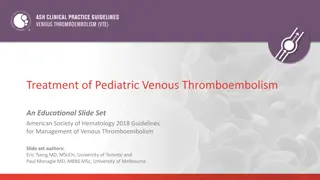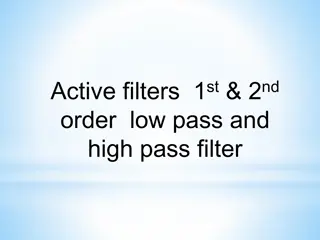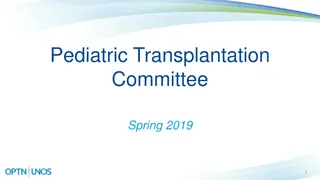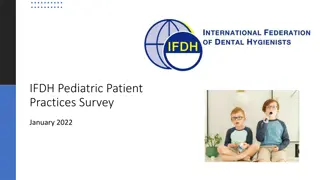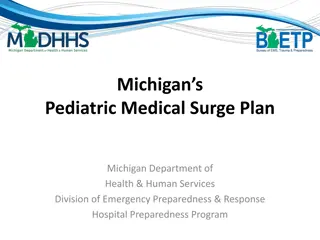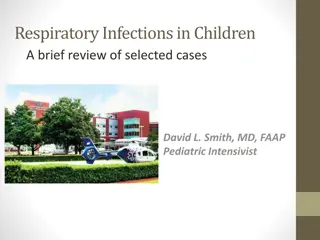Improving Communication in Pediatric Admissions Using I-PASS Method
A study conducted at Children's Mercy Kansas City implemented the I-PASS standardized admission handoff tool to enhance communication between pediatric urgent care and inpatient providers. Results showed significant improvement in communication effectiveness, with perceptions of communication during handoffs improving. Standardized handoffs were found to decrease medical errors, highlighting the importance of effective communication in patient care.
Download Presentation

Please find below an Image/Link to download the presentation.
The content on the website is provided AS IS for your information and personal use only. It may not be sold, licensed, or shared on other websites without obtaining consent from the author.If you encounter any issues during the download, it is possible that the publisher has removed the file from their server.
You are allowed to download the files provided on this website for personal or commercial use, subject to the condition that they are used lawfully. All files are the property of their respective owners.
The content on the website is provided AS IS for your information and personal use only. It may not be sold, licensed, or shared on other websites without obtaining consent from the author.
E N D
Presentation Transcript
Using a Standardized Admission Handoff (I-PASS) to Improve Communication Between Pediatric Urgent Care and Inpatient Providers Amanda Nedved, MD; Kathleen Berg, MD; Amanda Montalbano, MD MPH Children s Mercy Kansas City Results Results Background Background This was a new process for admission handoffs. Our baseline was 0%. In May 2019, providers completed I-PASS in 80% of admission handoffs to general inpatient teams. Duration of handoff at baseline was 4 minutes and remained 4 minutes during the intervention period. Complete I-PASS improved significantly after urgent care providers completed I-PASS training. Synthesis by Receiver improved after hospitalists updated their admission handoff form. Perception of communication during admission handoffs improved from baseline. Ineffective hand-off communication is recognized as a critical patient safety problem in health care. An estimated 80% of serious medical errors involve miscommunication between caregivers during the transfer of patients. Standardized handoffs associated with significant decrease in medical errors. A pre-interventions survey of pediatric urgent care providers and pediatric hospitalists demonstrated an opportunity for improvement of communication during admission handoffs. All providers at Children s Mercy Urgent Cares will use complete I-PASS (all 5 components verbalized) during verbal admission handoffs to general pediatric (med/surg) teams at least 75% of the time by May 31, 2019. Methods Methods Conclusions Conclusions In July 2018, a team of PUC and pediatric hospital medicine (PHM) physicians launched a customized I-PASS handoff tool to highlight essential elements during admission handoff. Multiple PDSA were completed. Scoring of handoffs was done by individual reviewers who listened to recordings of the phone call and entered the results into a REDCap database. A handoff was considered to have a component if the provider mentioned at least one element from the Description . In order to provide feedback to UC providers, scoring was not blinded. Standardardized handoffs improve communication without impeding provider workflow. We learned that subjective terms for illness severity ( stable , watcher and unstable did not translate well from urgent care to inpatient. We are planning on implementing and objective standardized tool (PEWS) to improve the communication of illness severity. We have also updated the I- PASS visual aid based on feedback. We plan to use more communication workshops to focus on individual components of I-PASS, specifically to improve the quality of Patient Summary. Intevention Period: July 1, 2018 May 31, 2019 Inclusion Criteria: All admits by all core providers from Children s Mercy Urgent Care to general pediatric teams at Children s Mercy Exclusion: Admissions from moonlighters or to subspecialty or critical care teams
Disclosure All authors have no relevant financial relationships or conflicts to disclose
Background/Problem Ineffective hand-off communication is recognized as a critical patient safety problem in health care An estimated 80% of serious medical errors involve miscommunication between caregivers during the transfer of patients Standardized handoffs associated with significant decrease in medical errors
Provider Perception of Communication During Admissions
Aim All providers at Children s Mercy Urgent Cares will use complete I-PASS (all 5 components verbalized) during verbal admission handoffs to general pediatric (med/surg) teams at least 75% of the time by May 31, 2019.
Interventions Visual aid I-PASS training workshop Monetary incentive (physician only) MOC Part 4 credit (physician only)
Mean Duration of Handoff Baseline: 4 min I-PASS: 4 min
What We Learned/Next Steps Standardardized handoffs improve communication without impeding provider workflow Subjective terms for Illness Severity do not translate well from UC to inpatient Objective standardized tool (PEWS) Updated visual aid based on feedback Work on improving quality and efficiency of Patient Summary
